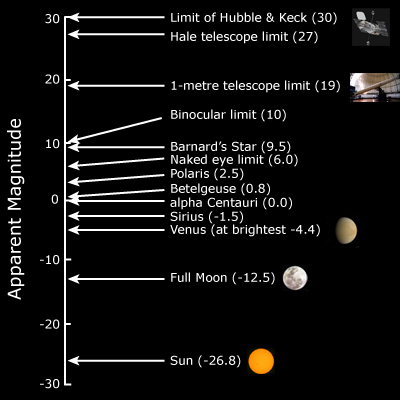
A star dies when it consumes its nuclear fuel, its mass. We might be tempted to conclude that the greater the supply of fuel (the more massive the star), the longer it will live; however, a star’s life span is also determined by how rapidly it burns its fuel. The more luminous a star, the more rapid the rate of consumption. Thus stellar lifetime is directly proportional to stellar mass and inversely proportional to stellar luminosity (how fast it burns). An analogy: A car with a large fuel tank (say a new Ford Excursion that gets 4–8 mpg) may have a much smaller range than a car with a small fuel tank (a Saturn which might get 30–40 mpg). The key? The Saturn gets much better mileage, and thus can go farther with the limited fuel it has.
Thus, while O- and B-type giants are 10 to 20 times more massive than the our G-type sun, their luminosity is thousands of times greater. Therefore, these most massive stars live much briefer lives (a few million years) than those with less fuel but more modest appetites for it.
A B-type star such as Rigel, 10 times more massive than the sun and 44,000 times more luminous, will live 20 106 years, or 20 million years. For comparison, 65 million years ago, dinosaurs roamed the earth! The G-type sun may be expected to burn for 10,000 106 years (ten billion years). Our red dwarf neighbor, Proxima Centauri, an M-type star that is 1⁄10 the mass of the sun (and 1⁄100 that of Rigel), is only 0.00006 times as luminous as the sun, so will consume its modest mass at a much slower rate and may be expected to live more than the current age of the universe. In the next two chapters we will see how stars go through their lives, and how they grow old and die.






